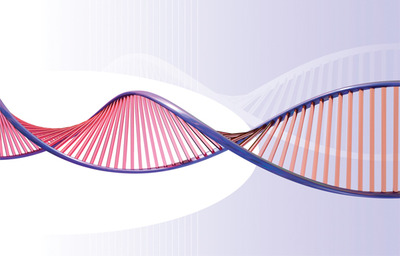The $1000 genome
Sydney’s Garvan Institute of Medical Research has been chosen as one of the first facilities in the world to acquire machines that can sequence a whole human genome at a base cost below US$1000.
The HiSeq X Ten Sequencing System, from Illumina, was introduced yesterday by CEO Jay Flatley at the JP Morgan 32nd Annual Healthcare Conference in San Francisco. Flatley described the product as “a dramatic technology advance that will enable researchers at the Garvan Institute to undertake studies of unprecedented scale”.

The system is said to be the world’s first platform to deliver full coverage human genomes for less than $1000, inclusive of typical instrument depreciation, DNA extraction, library preparation and estimated labour, though it does not include the cost of obtaining samples nor the analysis and interpretation of the data. It is sold as a set of 10 or more ultrahigh throughput sequencing systems, each generating up to 1.8 terabases (Tb) of sequencing data in less than three days or up to 600 gigabases (Gb) per day, per system.
Purpose-built for population-scale, whole genome sequencing, the product is suitable for scientists and institutions focused on the discovery of genotypic variation to enable a deeper understanding of human biology and genetic disease. It can sequence tens of thousands of samples annually, delivering a comprehensive catalogue of human variation within and outside coding regions.
Flatley said Illumina approached Garvan “due to its strength in the analysis and interpretation of genomic data, and its close affiliation with St Vincent’s Hospital”. With the support of The Kinghorn Foundation, the institute was able to purchase the sequencing system, which is capable of sequencing around 350 genomes a week, or 18,000 a year.
“Just over a decade ago it cost over a billion dollars to sequence the first human genome,” noted Professor John Mattick, executive director of Garvan. “Illumina’s new system makes it possible to address the pressing clinical needs of the thousands of people in Australia with genetic diseases and the tens of thousands diagnosed with cancer each year.
“We will start by using our new system for large-scale research projects and for problem-dependent diagnostic purposes, specifically the routine analysis of cancer biopsies and people with genetic disorders. We will also begin to analyse the genomes of people suffering from other conditions, such as diabetes and Parkinson’s disease.”
In the future, says Professor Mattick, genome sequencing could be available widely enough for personal health management. For example, Associate Professor Marcel Dinger, Garvan Head of Clinical Genomics, had his own genome sequenced recently, alerting him to a likely sensitivity to a commonly used general anaesthetic - a problem he can now avoid.
As for Garvan’s future, Professor Mattick anticipates it will go on to “serve as a genomics hub for Australia and possibly the region”; however, he noted that the system “will need massive global databases to support interpretation of the data”. Thus, he expects the purchase will “underpin a new phase of collaboration between government, industry and other medical research stakeholders”.
Droplet microfluidics for single-cell analysis
Discover how droplet microfluidics is revolutionising single-cell analysis and selection in...
PCR alternative offers diagnostic testing in a handheld device
Researchers have developed a diagnostic platform that uses similar techniques to PCR, but within...
Urine test enables non-invasive bladder cancer detection
Researchers have developed a streamlined and simplified DNA-based urine test to improve early...




